Honouring dead with a tour of cemetery in Turner's Cross
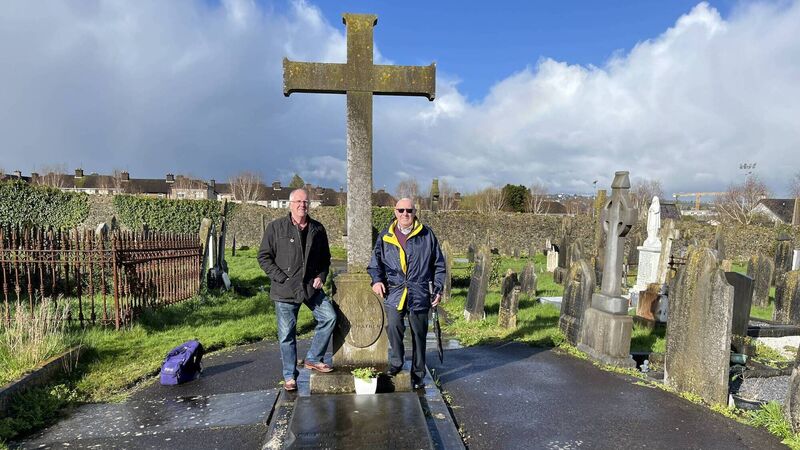
Ballyphehane historians Finbarr Barry and Liam Ó hUigín at the Father Mathew Cross. Picture: Donal O'Keeffe
IN Dublin’s Glasnevin Cemetery, visitors get one standard guided tour. The men who give tours of St Joseph’s Cemetery in Turner's Cross say they have theirs down to five different routes now.
Over 220,000 souls have been laid to rest in the cemetery in its 194 years, among them household names, heroes, revolutionaries and clergymen.
Sportspeople, poets, and parliamentarians lie here, as does at least one genuine Hollywood star.
There are approximately 5,540 headstones and monuments in St Joseph’s, marking the passing of the great and the good and also the lives of thousands of ordinary Cork people, whatever that might mean; the well-fed and the hungry, the happy and otherwise, the very old and the tragically young.
Some lie in mausoleums, some in paupers’ graves, some beneath the finest statues imaginable, some unnamed and forgotten, and some of those commemorated are not buried here at all.
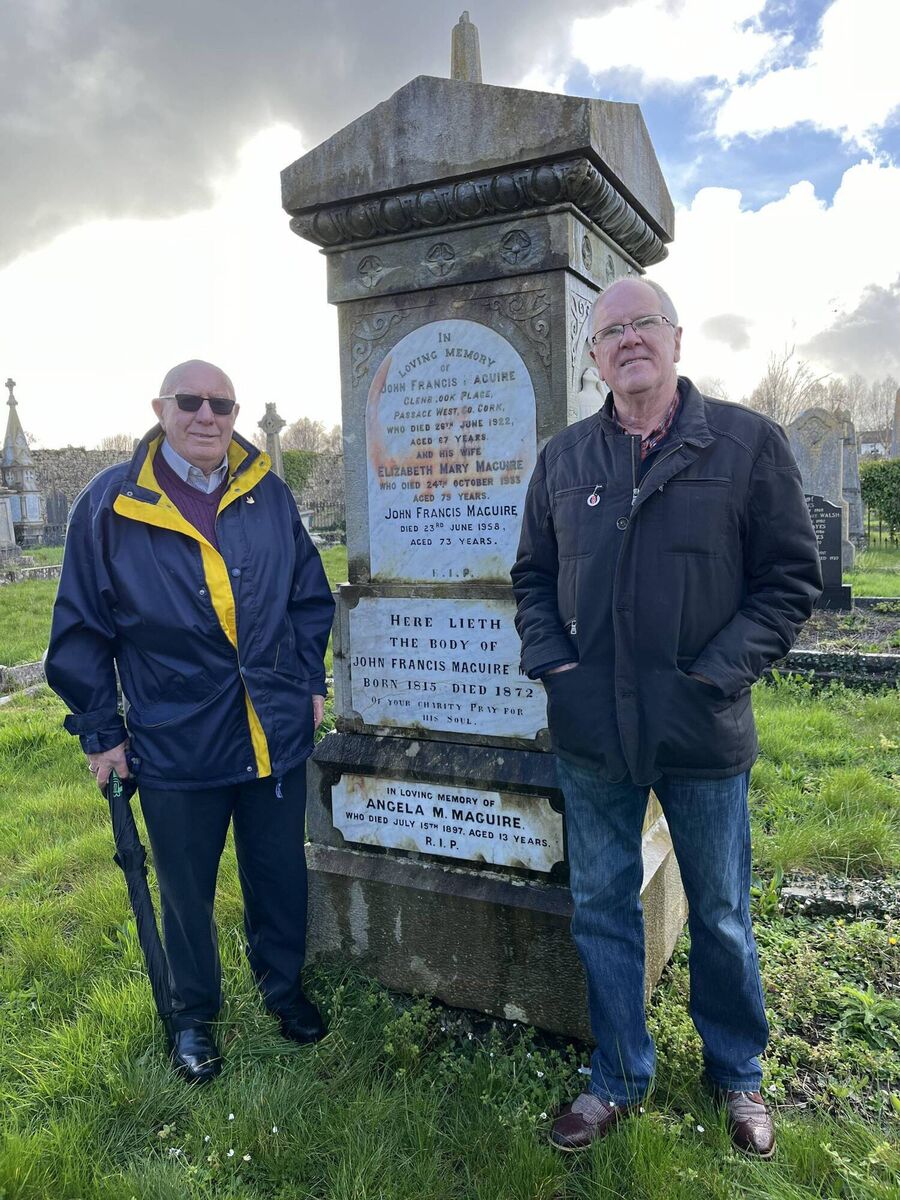
Cork’s first public cemetery, it was founded in 1830 by Father Theobald Mathew at a time when catholics had to get permission to be buried in protestant cemeteries, and, 26 years later, the Apostle of Temperance would be buried there himself.
Under the Burial Act (Ireland) 1824, cemeteries in Cork city and county were completely under Protestant control, and their burial fees were exorbitant.
In January 1830, temperance priest Fr Theobald Mathew negotiated with the Royal Cork Institute, at his own expense, a 999-year lease on the Botanic Gardens, which had fallen into decay.
A month later, the Botanic Gardens were blessed and dedicated as St Joseph’s Cemetery.
During the cholera epidemic of 1832, it is estimated that approximately 67 people a day were buried there, and during the Great Famine perhaps 13,000 were buried free of charge in a mass grave on “The Poor Ground”.
A stroke in 1848 left Fr Mathew in failing health, and he spent his final years in Queenstown (now Cobh) in the care of the Sisters of Mercy.
He died on December 8, 1856 and he was laid to rest at his own request at the foot of the large stone cross at the centre of his own cemetery.
Liam Ó hUigin and Finbarr Barry give free guided tours of the cemetery during the summer months, and there doesn’t seem to be a stone or a story that they don’t know.
“We’re locals and we have an interest in the cemetery here, an interest that we gained from a good historian of Cork, Ronnie Herlihy, and when Ronnie passed away, we picked up the cudgel and we do the walking tours here since,” Finbarr tells The Echo.
On a bitterly cold Wednesday afternoon in late March – it snowed earlier in the day – he and Liam give The Echo a whistle-stop tour of the cemetery.
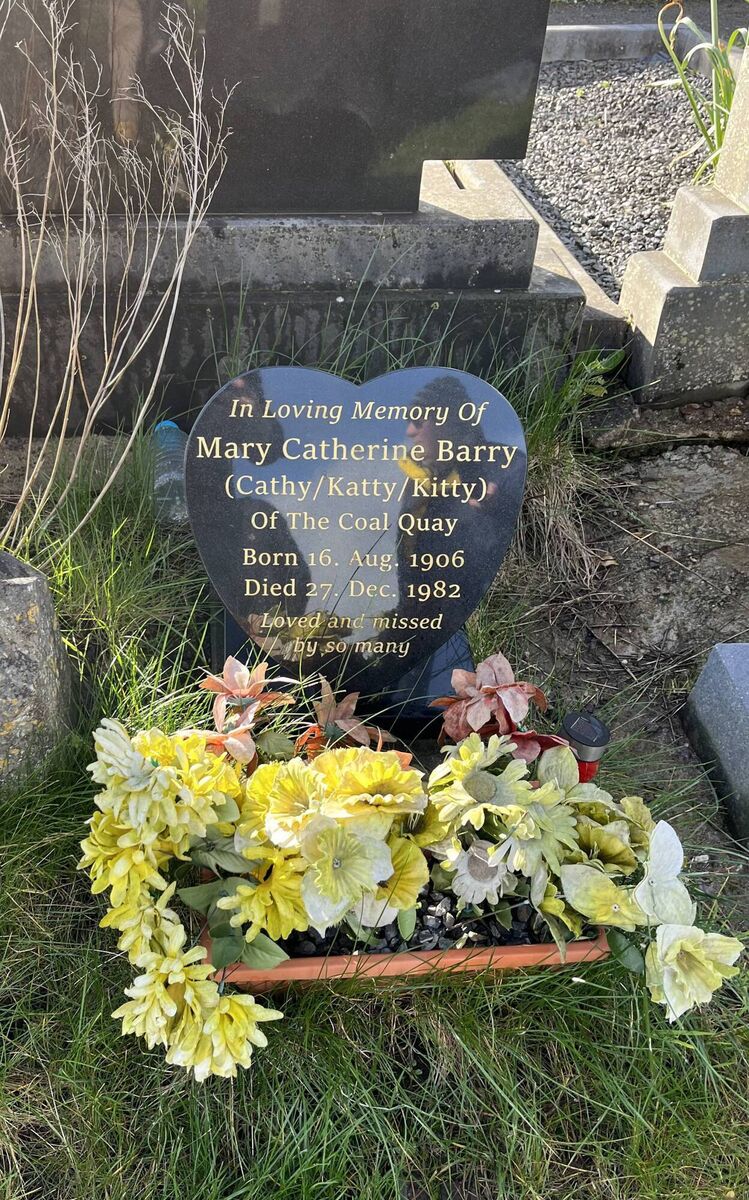
Not far from Fr Mathew’s cross is the grave of his nephew, Sir James Charles Mathew, who was born the year the cemetery opened. He was educated in a private school in Cork’s Mansion House, now the Mercy Hospital, and later, thanks to his uncle’s influence, in Trinity College Dublin.
Later a High Court judge in London, he became a driving force behind the creation of the Commercial List in 1895, the forerunner of the modern Commercial Court.
Close by is the grave of Maureen Curtis Black, the first Corkwoman to receive the freedom of her native city, honoured for her tireless advocacy of the underdog.
She campaigned for widows’ rights, and founded Cork’s first Citizens’ Advice Bureau, and, although a devout Catholic, she argued in 1983 that the Eighth Amendment would endanger the health of women by granting equal rights to life to the unborn and the women carrying them. “But then,” she wrote in the Cork Examiner, “it is only women who are at risk — and women, especially married women, don’t count in Ireland”.
Women who usually were not married are the dozens buried in St Joseph’s who were in the Good Shepherd Magdalene laundry in Sunday’s Well.
Their names are listed here on black headstones, but some of those names have been found to be duplicated on burial records elsewhere, compounding in death the lack of respect they were shown in life.

Ellen Organ (1903 to 1908), better known as Little Nellie of Holy God, the “unofficial patron saint of Cork”, was buried here, for a while, before the Good Shepherd nuns realised that having her in their graveyard in Sunday’s Well would draw pilgrims there.
Beneath one raised grass space known as “The Poor Ground”, approximately 13,000 people are buried in a shallow, mass grave for victims of the Famine. They were covered in quicklime and a thin layer of earth, and the Cork Examiner would later publish letters complaining that, in some cases, what little dignity the dead were afforded had been interrupted by hungry dogs.
Nearby is a veritable millionaires’ row of huge and very expensive memorials, and a glance at the dates shows the rich went to their reward at the same time the poor died on the roadsides and in the fields.
One of the larger monuments belongs to the founder of the then Cork Examiner, John Francis Maguire MP (1815 to 1872), buried in the cemetery founded by his great friend Fr Mathew. Journalist, philanthropist, and patriot, he was a very early advocate of female suffrage, and Cork came to a complete standstill the day of his funeral. A national tribute was collected for his widow and children, and Queen Victoria herself contributed.
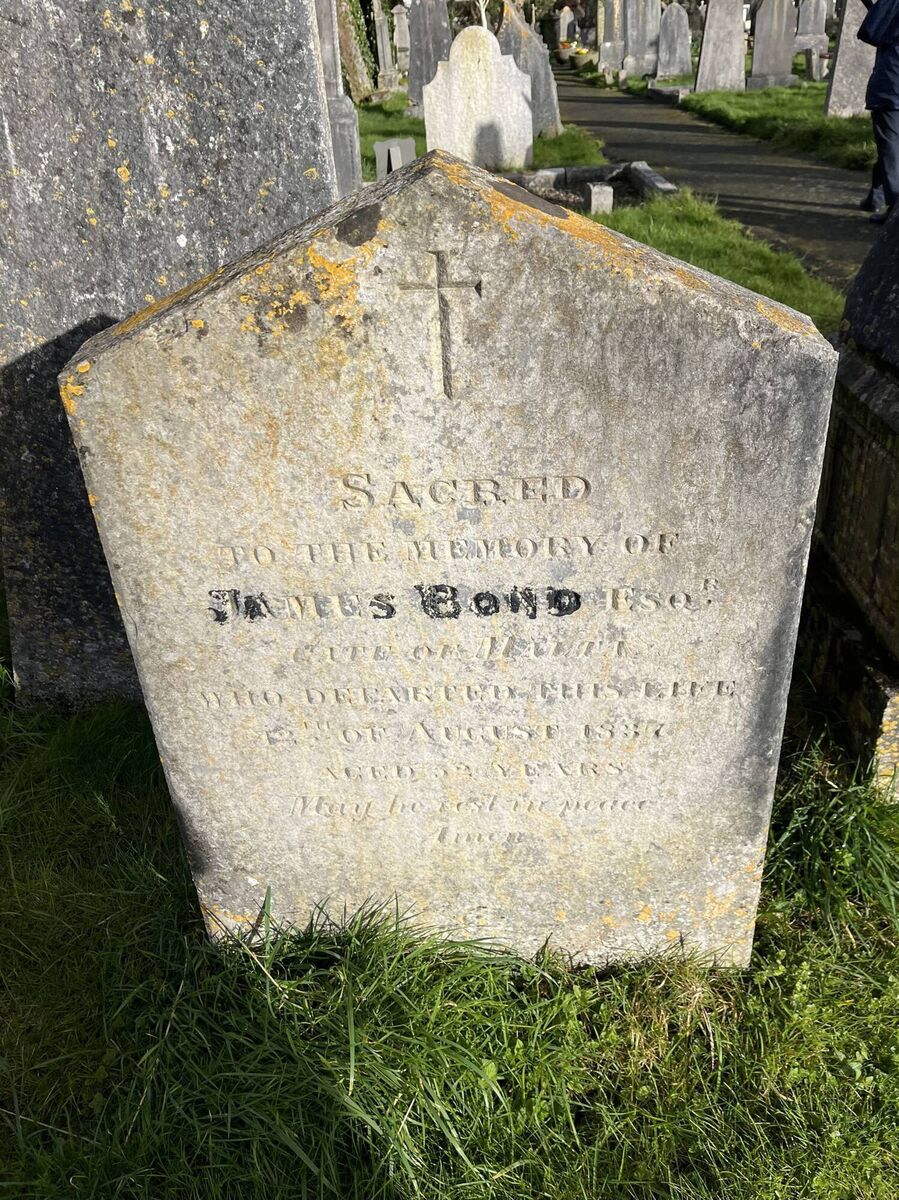
Mary Catherine Barry (1906 to 1982), better known as Katty Barry, “the Queen of the Coal Quay”, is buried here. “Loved and missed by so many”, she was remembered in the Irish Times as “elegant, observant, highly intelligent, with a devilish twinkle in her eye and the ability to cut people down to size”.
The ashes of Hollywood star Edward Mulhare (1923 to 1997) rest in St Joseph’s. To Irish television viewers watching ‘Knight Rider’ in the 1980s, or to an earlier generation watching ‘The Ghost and Mrs Muir’ in the 1970s, he appeared to be the quintessential English actor, and few might have guessed that he had been born on Quaker Road.
A stone Celtic cross is marked “The burial place of the boys of St Joseph’s Industrial School Greenmount”. The industrial school opened in 1871 and closed in 1959 and had a capacity for 200 children.
Daniel Corkery’s headstone, designed by Seamus Murphy, is something to see, and there are small treasures to be found at every turn, beautifully carved pictorial stones, and small, modest markers bearing dates and names and fragments of memories that are all that is left of people who were once as alive as we are.
At the small, flat stone of A Coleman, Royal Munster Fusiliers, 2nd October 1915, age 21, Liam stops and says quietly: “He died at Gallipoli, that’s the unique type of stone used to commemorate Gallipoli.”
It is impossible to summarise in one article the tour of St Joseph’s Cemetery offered by Liam Ó hUigin and Finbarr Barry, two warm and entertaining historians who honour the dead by telling their stories and keeping alive their memory.
It is a fascinating and often moving experience to walk among the gravestones and remember the lives of those who went before us on the journey we all must one day make.
Free guided tours of St Joseph’s Cemetery begin at the main gates at 7pm on the first Wednesday of every month, from May to September.


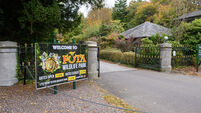




 App?
App?





